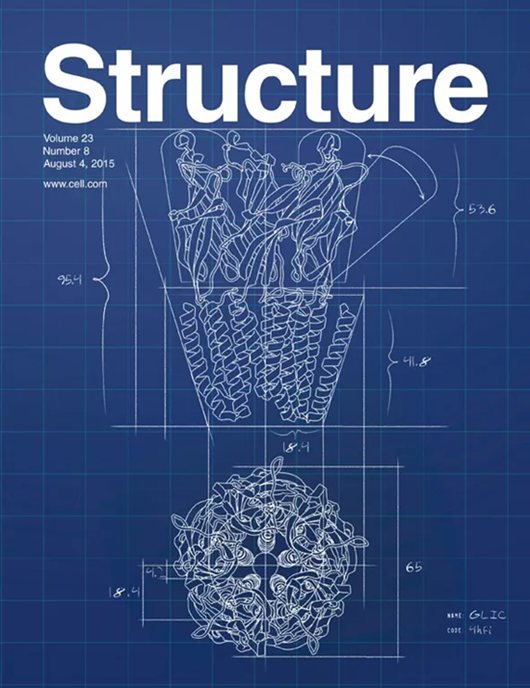Structural basis for the constitutive activity of the melanocortin receptor family
IF 4.4
2区 生物学
Q2 BIOCHEMISTRY & MOLECULAR BIOLOGY
引用次数: 0
Abstract
The constitutive activity of melanocortin receptors (MCRs) is integral to several physiological processes. The unliganded cryo-electron microscopy structures of MC1R, MC2R, MC3R, MC4R, and MC5R in complex with Gs proteins determined at global resolutions of 2.98 Å, 3.01 Å, 2.75 Å, 3.12 Å, and 2.86 Å, respectively, revealed that their binding poses and interactions with Gs are similar to those of agonist-bound MCRs. The extracellular regions of the transmembrane helices (TMs) exhibit distinct conformational rearrangements, characterized by varying shifts of TM3 and outward displacements of TM4. These variations represent unique structural features of constitutively activated MCRs. Unassigned electron densities were observed within the orthosteric pockets where extensive interactions with cognate ligands occur. In addition, zinc ions, but not calcium, positively regulated MC4R activity in a dose-dependent manner. Our findings provide valuable insights into the molecular mechanisms underlying MCR basal activity and highlight the role of divalent ions in receptor activation.

求助全文
约1分钟内获得全文
求助全文
来源期刊

Structure
生物-生化与分子生物学
CiteScore
8.90
自引率
1.80%
发文量
155
审稿时长
3-8 weeks
期刊介绍:
Structure aims to publish papers of exceptional interest in the field of structural biology. The journal strives to be essential reading for structural biologists, as well as biologists and biochemists that are interested in macromolecular structure and function. Structure strongly encourages the submission of manuscripts that present structural and molecular insights into biological function and mechanism. Other reports that address fundamental questions in structural biology, such as structure-based examinations of protein evolution, folding, and/or design, will also be considered. We will consider the application of any method, experimental or computational, at high or low resolution, to conduct structural investigations, as long as the method is appropriate for the biological, functional, and mechanistic question(s) being addressed. Likewise, reports describing single-molecule analysis of biological mechanisms are welcome.
In general, the editors encourage submission of experimental structural studies that are enriched by an analysis of structure-activity relationships and will not consider studies that solely report structural information unless the structure or analysis is of exceptional and broad interest. Studies reporting only homology models, de novo models, or molecular dynamics simulations are also discouraged unless the models are informed by or validated by novel experimental data; rationalization of a large body of existing experimental evidence and making testable predictions based on a model or simulation is often not considered sufficient.
 求助内容:
求助内容: 应助结果提醒方式:
应助结果提醒方式:


